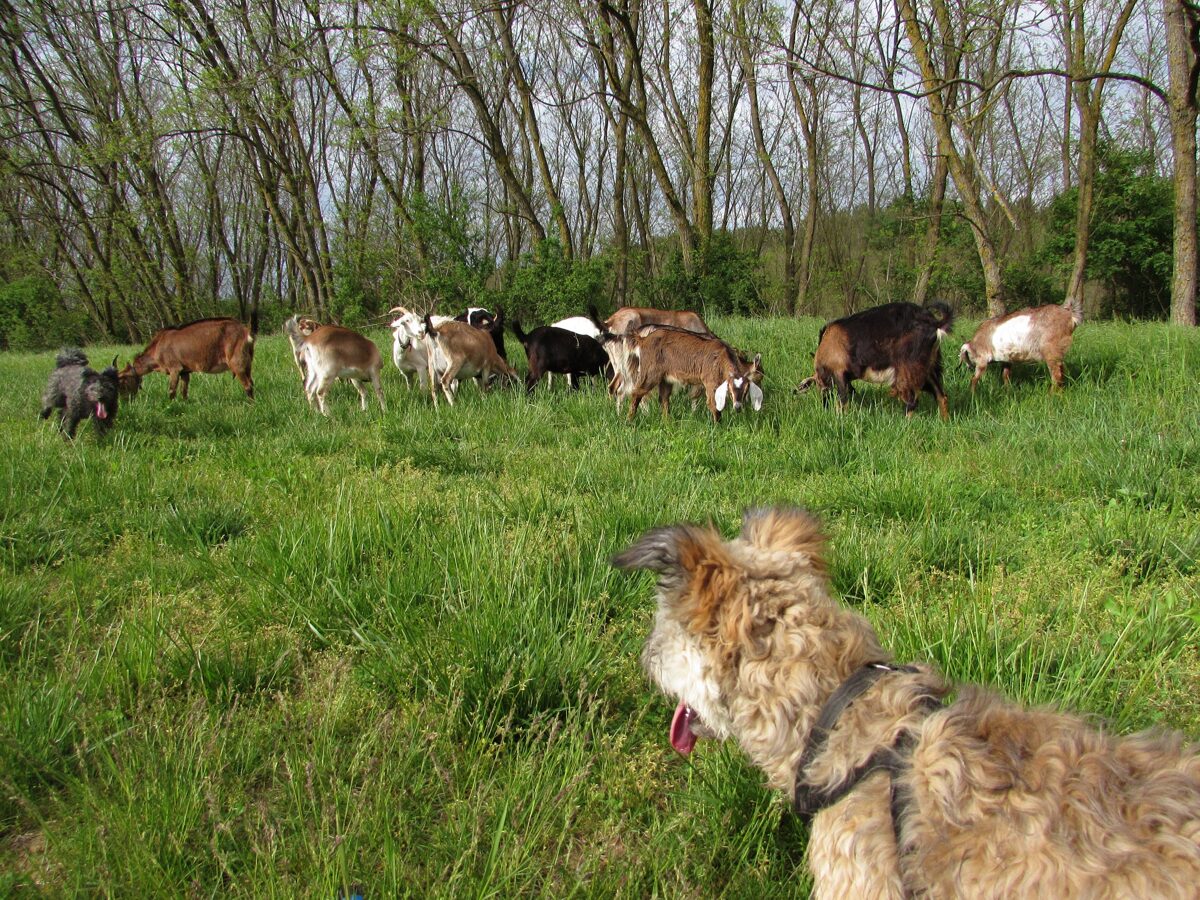According to (most of) the shepherds the herding dogs of
today’s breeders became soft and is no longer suitable for work.
According to (some) of the breeders, herding dogs living
with shepherds and on farms are unkempt, scruffy and not taken care of
properly.
We are trying to balance on the (imaginary) thin board
between the two camps.
We try to keep the views of both sides in mind, but
primarily the needs of our dogs.
We live on a farm and our dogs everyday work is highly appreciated.
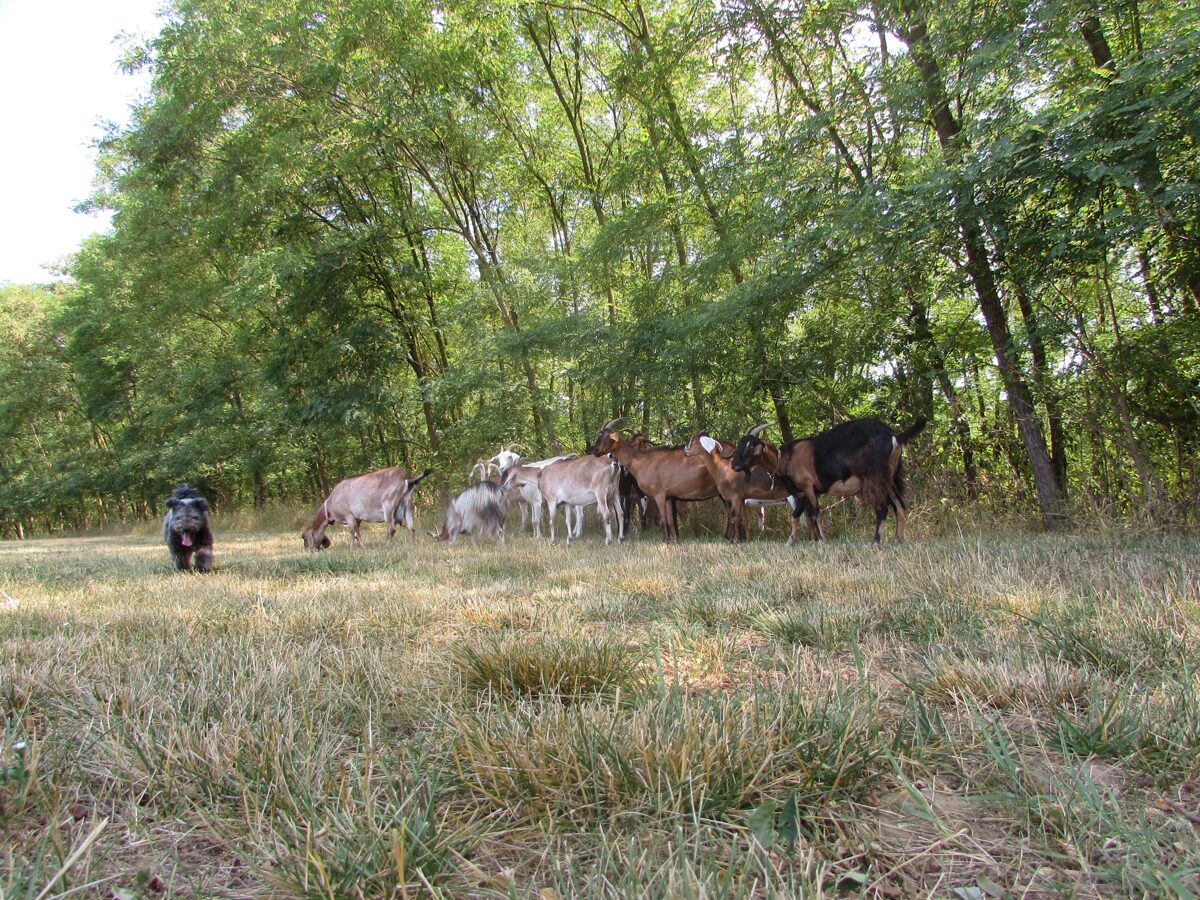
Before the development of the breeds in today's sense, the name of the Hungarian herding dogs changed depending on the region. The "homeland" of the pumi was in Somogy county in the south-west region of Hungary. (Where we actually live now.)
Perhaps I don't need to say how uplifting is to walk in the footsteps of our ancestors with our little flock and a pumi by our side. It is a joy to watch them, to see how the instincts inherited from their predecessors begins to work in them, how meanwhile the herding dog thrives.
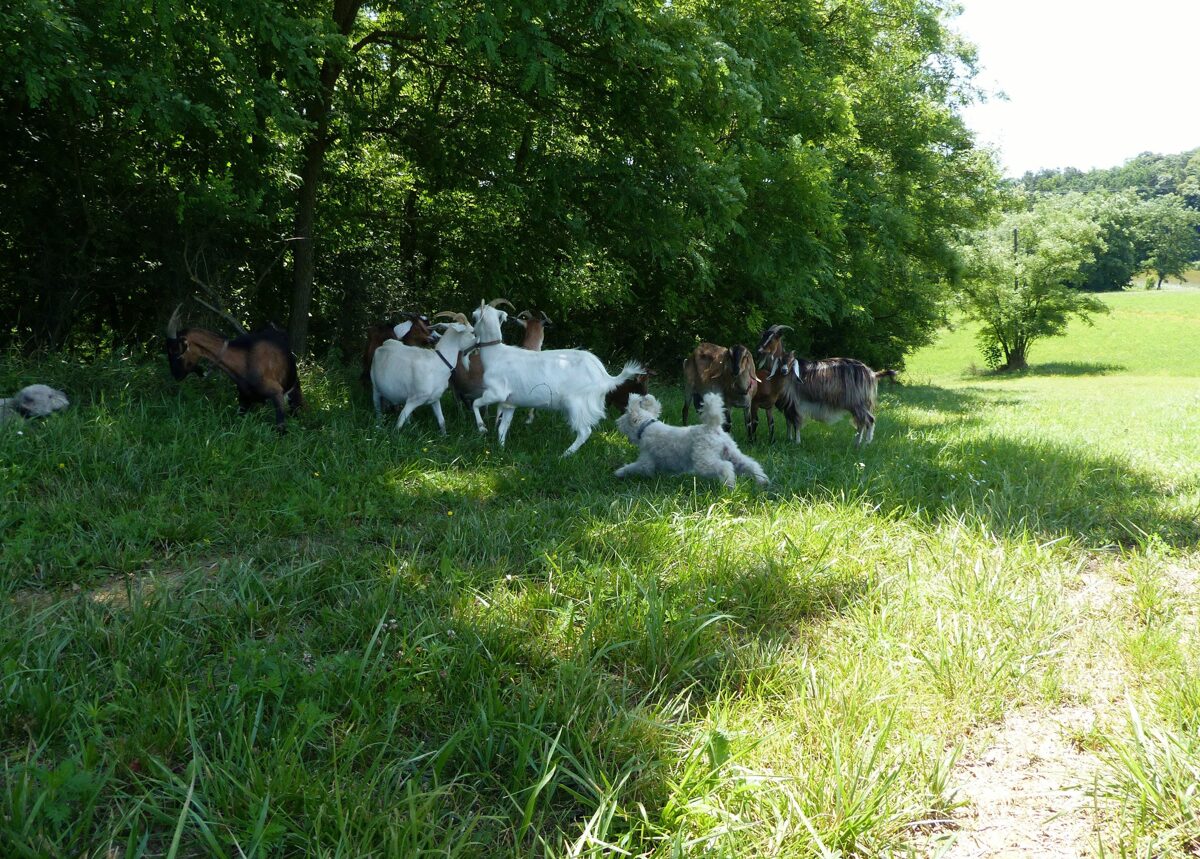
Our way
In the beginning I asked a few shepherds, (some can still be found today who work with dogs) about how to do proper herding and then, after getting more or less usable advices I decided - whatever will happen - we'll try it.
Virgonc, our first pumi was already one and a half years old then. By that time, an extremely close relationship had developed between us, she could be called in under any circumstances, we learned a lot of tricks, that is, we learned to work together, she already payed attention to my every of my signals. So the foundations were solid.
I only observed her, how she relates to the goats, how she positions herself, what she does in each situation. I encouraged her skill with praise, and restrained her with a sharp word if she went too far in her initial enthusiasm. A few times proved to be enough for us to roam further with more and more confidence, testing ourselves in different situations.
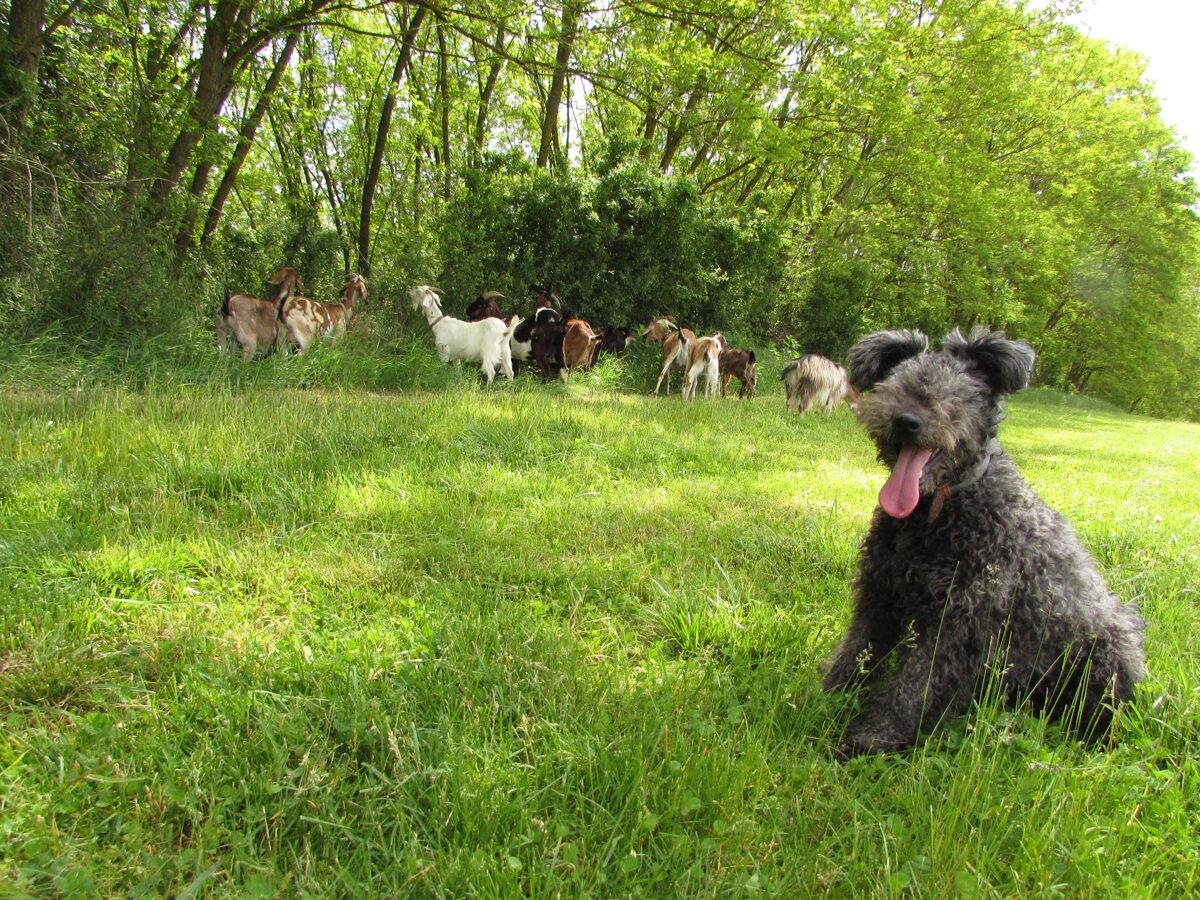
All of this - as it turned out later - was necessary. During the increasingly frequent drought summers we were forced to roam further and further away from our small farm, where the flock could still graze. While we were avoiding the burnt grass, the pumi constantly supervised the flock, so that they did not turn into the lucerne fields, which were still green.
Although goats (unlike sheep) like to graze while in continuous walk, we stop with them from time to time. In such cases, Virgonc "rests" at my feet, but she keeps her attention on the herd. If she feels that the flock has strayed too far, she goes after them and carefully herds them back.
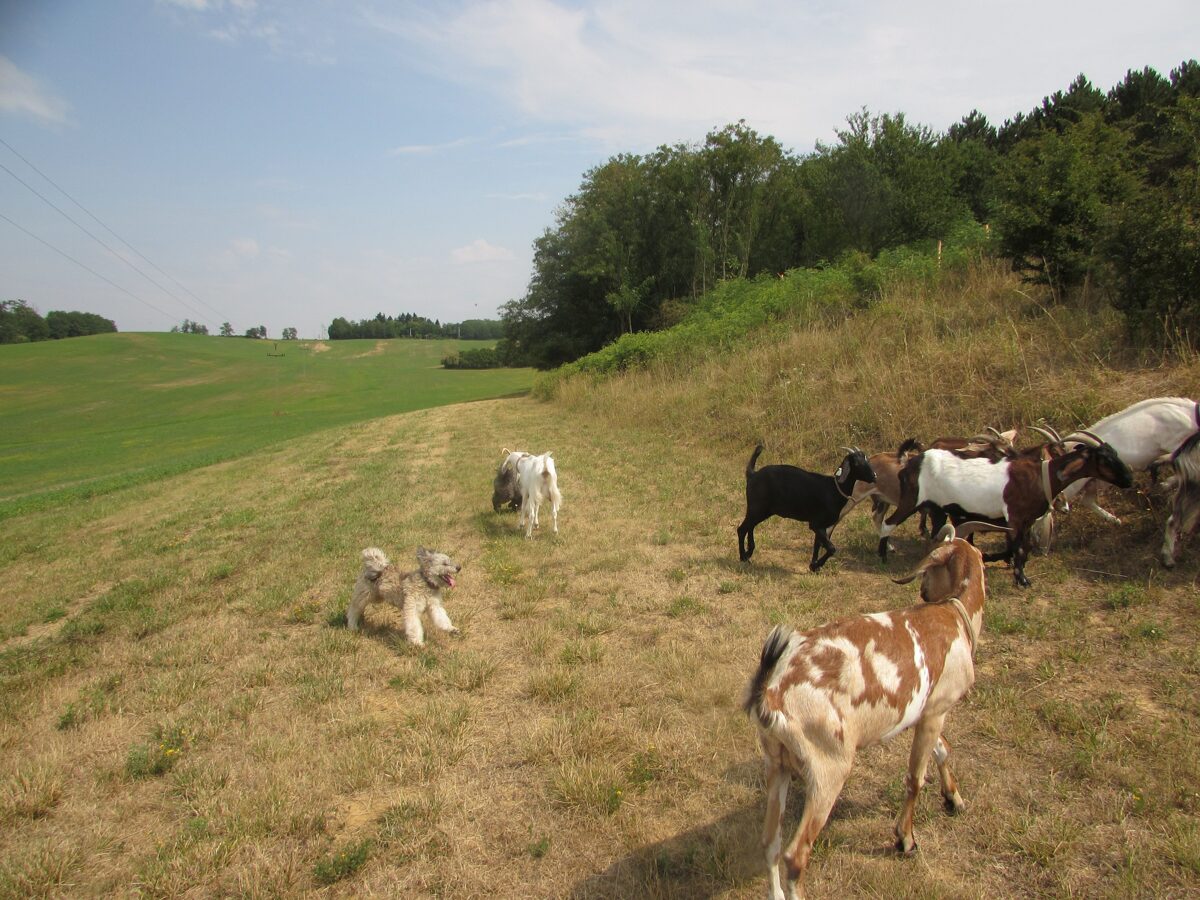
We often roam in the nearby forests. Partly because goats are primarily leaf-eaters, and on the other hand, the bottom of the acacia forest is mostly green even in winter, while in summer it provides some relief from the sweltering heat. Here, it is more difficult for the dogs to keep an eye on or drive back the goats if they have wandered off in the terrain covered with trees and undergrowth.
A high degree of mutual trust is necessary in such circumstances. If a member of the flock have roamed further away, the pumi has to trust that when I send her pointing in a certain direction that if she go that way, sooner or later she will find the strayed goat there. And I have to trust that my dog will perform the task flawlessly.
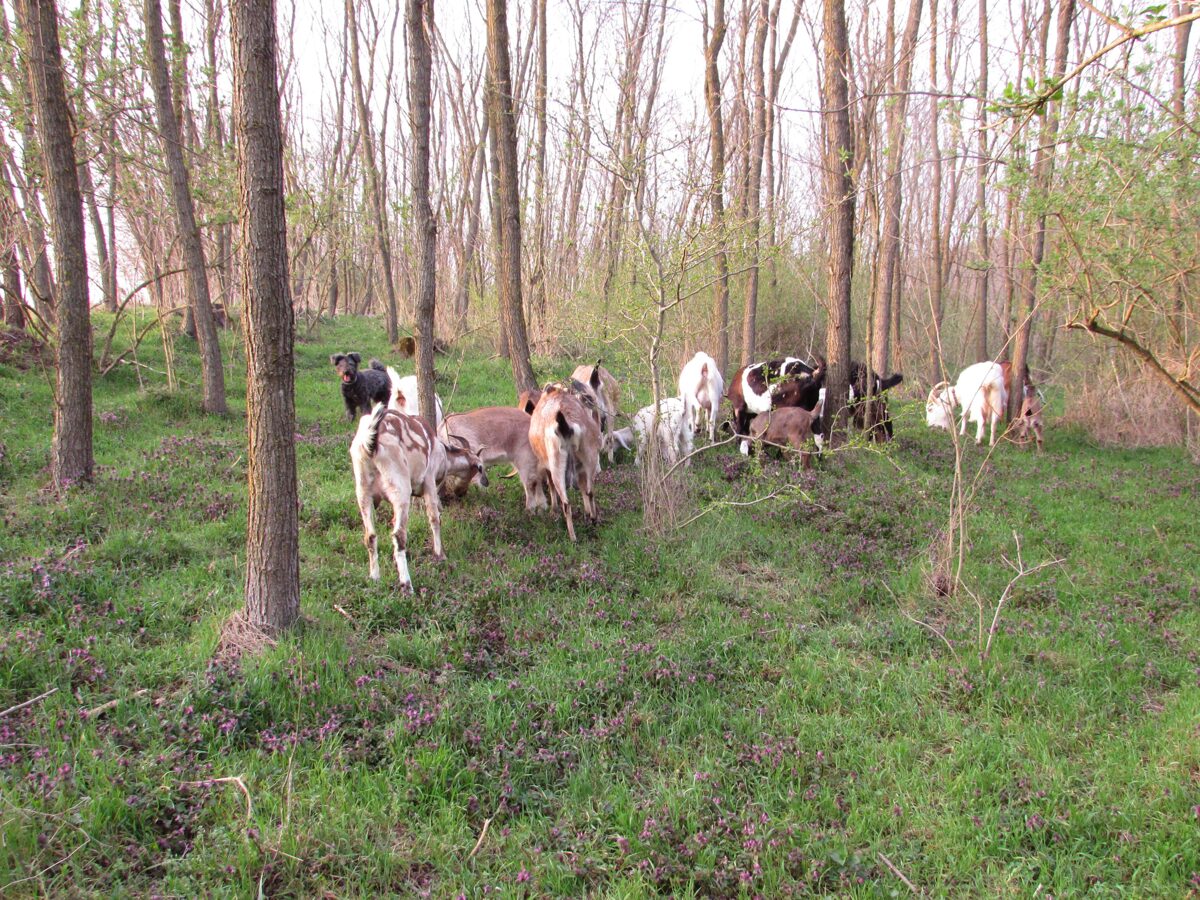
It was also necessary to learn that goats can behave
differently in certain stages of their lives. The same goat that usually does
what the dog wants her to do, when she has an offspring, she obeys her
instincts and turns to face the dog to protect the goatling.
This time the pumi’s job is much harder.
To the other pumis – and also for us – herding wasn’t so hard work any more for we didn’t have to start all over again. It is much easier to learn the ins and outs of it from an experienced dog.
